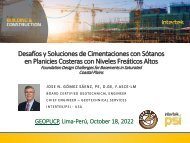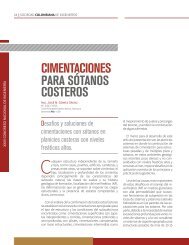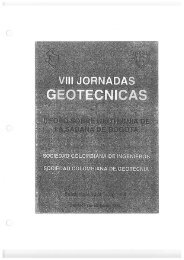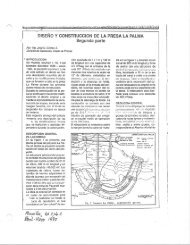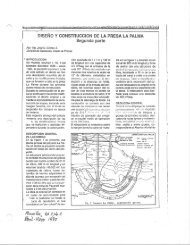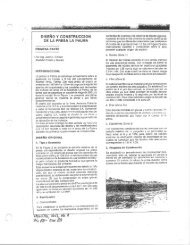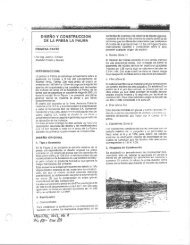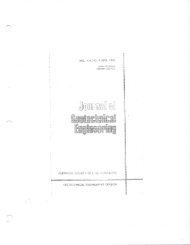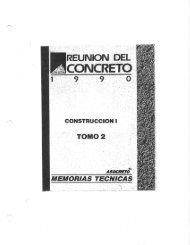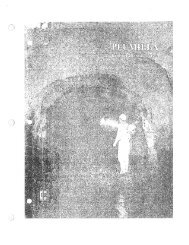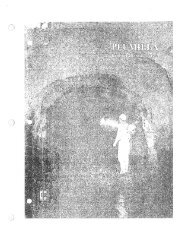Practical and Academic Geotechnical Reflections, 2018
The following article was published in the Florida Engineering Society (FES), July 2018 Journal dedicated annually to the enlightenment and education of Geotechnical Engineering. This article came to my mind as a result of teaching, mentoring, reviewing reports and supervising Geotechnical sites during four decades of my life. I say "Thank You" to my family, colleagues, co-workers and students who have supported me in my passionate pursuit of excellence in this rewarding field. Success of geotechnical projects depend on several coupling factors such as academic preparation, continuing education and professional experience. All of which, when well acquired allow for success and application of what is called “engineering judgment”. All three factors above become more relevant when one considers that geotechnics is not a precise science: rather instead, an art. As the legendary geotechnical engineer and professor, Ralph B. Peck(5) mentioned in one of his last memorable conferences, “geotechnics is an imprecise art”. It is possible that for lack of academic knowledge, poor experiences and even worse, an engineer that has been negligent in their basic duties, the following typically occur: (a) geotechnical exploration is insufficient, (b) application of basic geotechnical concepts are misled, (c) foundation design redundancy is not applied, and (d) instrumentation is not considered or does not have the appropriate scope to fulfill project needs. The goal of this article is to present orderly, important and practical geotechnical aspects (as listed above) to consider when involved in a project design or existing construction project in layman’s terms and without deepening into extended numerical theories. When these aspects are not accounted for properly or focus is missed during project development, generally the project quality and human safety could be compromised causing loss of life and/or loss of property. We are not exonerated from human factors and the geotechnical failures associated with it, but we strive to diminish them.
The following article was published in the Florida Engineering Society (FES), July 2018 Journal dedicated annually to the enlightenment and education of Geotechnical Engineering. This article came to my mind as a result of teaching, mentoring, reviewing reports and supervising Geotechnical sites during four decades of my life. I say "Thank You" to my family, colleagues, co-workers and students who have supported me in my passionate pursuit of excellence in this rewarding field.
Success of geotechnical projects depend on several coupling factors such as academic preparation, continuing education and professional experience. All of which, when well acquired allow for success and application of what is called “engineering judgment”. All three factors above become more relevant when one considers that geotechnics is not a precise science: rather instead, an art. As the legendary geotechnical engineer and professor, Ralph B. Peck(5) mentioned in one of his last memorable conferences, “geotechnics is an imprecise art”.
It is possible that for lack of academic knowledge, poor experiences and even worse, an engineer that has been negligent in their basic duties, the following typically occur: (a) geotechnical exploration is insufficient, (b) application of basic geotechnical concepts are misled, (c) foundation design redundancy is not applied, and (d) instrumentation is not considered or does not have the appropriate scope to fulfill project needs.
The goal of this article is to present orderly, important and practical geotechnical aspects (as listed above) to consider when involved in a project design or existing construction project in layman’s terms and without deepening into extended numerical theories. When these aspects are not accounted for properly or focus is missed during project development, generally the project quality and human safety could be compromised causing loss of life and/or loss of property. We are not exonerated from human factors and the geotechnical failures associated with it, but we strive to diminish them.
Create successful ePaper yourself
Turn your PDF publications into a flip-book with our unique Google optimized e-Paper software.
<strong>Practical</strong> <strong>and</strong> <strong>Academic</strong> <strong>Geotechnical</strong> <strong>Reflections</strong> continued from page 23<br />
Figure 3. Base failure; wrong excavation sequence.<br />
Figure 3. Base failure; wrong excavation sequence (EITHER WORKS or BOTH)<br />
fine soils (clays) <strong>and</strong> coarse or granular soils,<br />
since the differences in magnitude <strong>and</strong> the<br />
shape of the LEP distributions are important.<br />
Figure 2 shows the case of a l<strong>and</strong>slide (2)<br />
where the LEP in the lower part of the<br />
excavation was considered for a granular soil<br />
rather than a clayey soil that was encountered<br />
afterwards… thus generating a LEP up<br />
to four times larger than those that were<br />
considered. Obviously, the system collapsed.<br />
Designs concepts must not be changed<br />
without knowledge or technical support,<br />
even if requests come from high management<br />
levels. Some examples are: reducing safety<br />
factors; ignoring events such as earthquakes,<br />
floods, hurricanes; reducing excavation<br />
support elements; among others (redundancy,<br />
see below). Modifying excavation methods<br />
from sections to continuous modalities<br />
under the pretext of speeding up the work<br />
(see Figure 3) could end in failure. In short,<br />
several examples could be given that often<br />
lead to generating serious problems in<br />
projects.<br />
Lack of Redundancy. The classic<br />
article of professor J. Osterberg (4)<br />
deepens the<br />
philosophy of redundancy in geotechnical<br />
engineering. This concept is often forgotten<br />
when designing (e.g.) key <strong>and</strong> repetitive<br />
elements, on which the stability of a work<br />
depends. This is the case for systems<br />
involving tiebacks, piles, pumping systems,<br />
among others, where if “a single element”<br />
which is an integral part of several fails, the<br />
Figure 4. Excavation slide due to tiebacks failure (see Figure 2)<br />
entire system could collapse. The l<strong>and</strong>slide<br />
that occurred on Calle 72(2), where, due<br />
to the failure of one or two 25-ton tiebacks<br />
out of many caused an entire 17-meter deep<br />
excavation to collapse (Figures 2 <strong>and</strong> 4) is an<br />
example. As a recommendation, one should<br />
habitually ask oneself, “what happens if an<br />
element fails within a well mathematically<br />
calculated <strong>and</strong> stable system” <strong>and</strong> “what<br />
measures can be anticipated to insure the<br />
stability of a work?” This is what is now<br />
called Plan B. A simple <strong>and</strong> illustrative<br />
example is the case of a foundation with<br />
piles when the calculation result indicates<br />
that only one pile per foundation support<br />
element is required. It is better to decrease<br />
(e.g.) the diameter of the pile a little <strong>and</strong> to<br />
contemplate two or three smaller diameter<br />
piles in each support rather than depending<br />
on a single element for stability.<br />
Lack of Instrumentation. It is necessary<br />
to insist on designing <strong>and</strong> implementing<br />
instrumentation programs in projects,<br />
regardless of the “magnitude or size” of the<br />
project. Both the “large” <strong>and</strong> “small” projects<br />
will require it. As Professor R. Marsal<br />
said when it came to teaching, “there is no<br />
difference between small or large projects;<br />
all of them need studies <strong>and</strong> solutions to be<br />
thoroughly analyzed.” (3)<br />
Instrumentation<br />
is the only tool that is available to verify<br />
the project design considerations <strong>and</strong> to<br />
know the timely behavior of the works<br />
during <strong>and</strong> after construction. This is an<br />
24 | JOURNAL Florida Engineering Society | JULY <strong>2018</strong><br />
fleng.org




